




Introduction to Properties of Water for Kids
Water is necessary for the survival of all living things, from microscopic bacteria to enormous blue whales. Life as we know it would not exist without water, and where there is water, there is life.
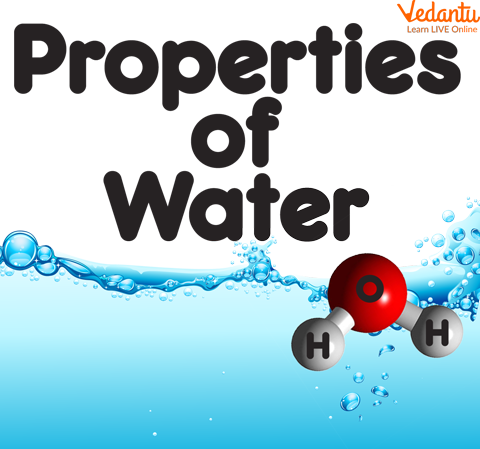
Properties of Water for Kids
All living things, including plants and animals, depend on water, whether hot or cold, salty or fresh, abundant or scarce. They can survive in various environments, from hot deserts to the chilly, deep oceans. Nearly four billion years ago, the first living organisms emerged in the ocean. Some organisms, those which came before us, adapted to life on land. In addition to deserts and swamps, humans have mastered a variety of other settings.
There are still more different species of life on Earth in the water than any place else.
Properties of Water for Kids:
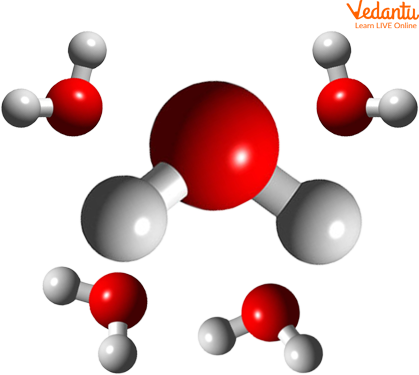
Properties of Water
Following are the properties of water for kids-
Water Has Two Poles.
The structure of water molecules is twisted and polar, with partial positive charges on the hydrogens and partial negative charges on the oxygen.
A Great Solvent is Water.
Many polar and ionic chemicals can be dissolved by water, which is a unique property. All living creatures need to know this since the water cycle removes many critical nutrients from the water as it moves through it.
Water Vaporizes at a High Temperature.
Humans and other sweating animals use the high heat of vaporization of water to cool themselves. When the temperature for vaporization is attained, water changes from its liquid state to steam.
Cohesive and Adhesive Qualities are Present in Water.
Because water molecules can create hydrogen bonds with one another, they have powerful adhesive forces. Water may adhere to objects other than itself thanks to its adhesive qualities as well.
As a Solid, Water is Less Dense Than as a Liquid.
When water freezes, the molecules organize into a crystalline structure that spreads them farther apart than when the water is liquid. As a result, ice floats because it is less thick than liquid water.
Uses of Water for Kids:
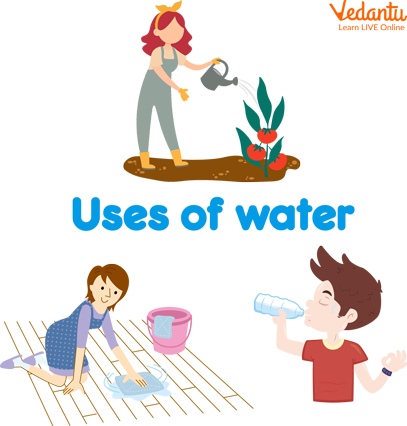
Uses of Water
Both direct and indirect uses of water are possible. While bathing, drinking, and cooking are examples of direct uses of water, indirect uses include the production of steel for automobiles and the processing of wood to manufacture paper. Water is mostly used for agriculture, manufacturing, and energy around the world. The most typical uses of water for kids include-
Drinking and Household Needs
Recreation
Industry and Commerce
Agriculture
Thermoelectricity/Energy
States of Water for Kids:
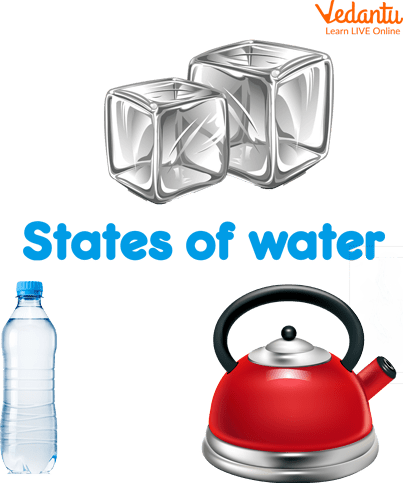
States of Water
We are aware that water is not always "wet," as it can occasionally be frozen into ice or snow. Water can exist in three different states depending on the temperature and kinetic energy of its molecules.
Following are the states of water for kids-
The solid form of water is called ice. Water freezes and turns into ice when the temperature falls below 0 degrees C (32 degrees F).
The wet substance we consume and swim in is referred to as liquid.
Water converts into its gaseous state, known as vapor, when it evaporates or reaches a temperature of more than 100 degrees Celsius and begins to boil.
Water Formula in Science:
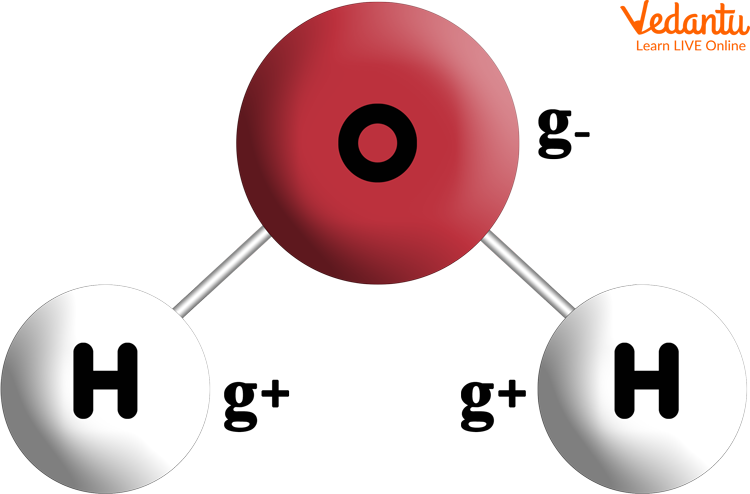
Water Formula in Science
Water formula in science is H2O. One oxygen atom is covalently joined to two hydrogen atoms to form a single water molecule.
Contrary to what most people believe, only totally pure water is empty of all other ions and elements. Chlorine, silicates, magnesium, calcium, aluminum, sodium, and tiny amounts of other ions and compounds are typically found in drinking water.
Additionally, water decomposes into its own H+ and OH- ions.
Summary
Water H2O is an inorganic chemical that exists in liquid, gaseous (steam, water vapor), and solid (ice) phases. Water is a colorless, flavorless, and odorless liquid at normal temperature. Water is one of the most prevalent substances and makes up around 75% of the surface of the planet.
FAQs on Properties of Water for Kids
1. What are the forms of water for kids and what are its top facts?
The three forms of water for kids that are circulated in the water cycle are solid, liquid, and gaseous. Ice, the solid form of water, is found in glaciers, snow-covered mountains, and the poles of the earth. Rivers, lakes, seas, and oceans all contain the liquid form of the substance. Water vapor, which is water in a gaseous state, is all around us.
The oceans contain almost all of the water on Earth.
Ice contains the majority of freshwater.
There are different levels of salt in salt water.
One drop of water can contain a lot of organisms.
Some of the water may have originated from comets.
The fact that ice floats is fantastic.
Our bodies are mostly water.
2. What are the characteristics of water and what makes it vital to life?
It is a clear, tasteless, odorless, as well as a colorless liquid known as water. Every day, whether we take baths or showers, drink water, or go swimming on a hot day, we come into contact with it.
In people, it serves as a solvent and a means of delivery, allowing vital vitamins and nutrients to be dissolved from meals and transported to cells. Water is used by our bodies to help metabolism, cleanse out pollutants, and control body temperature.









